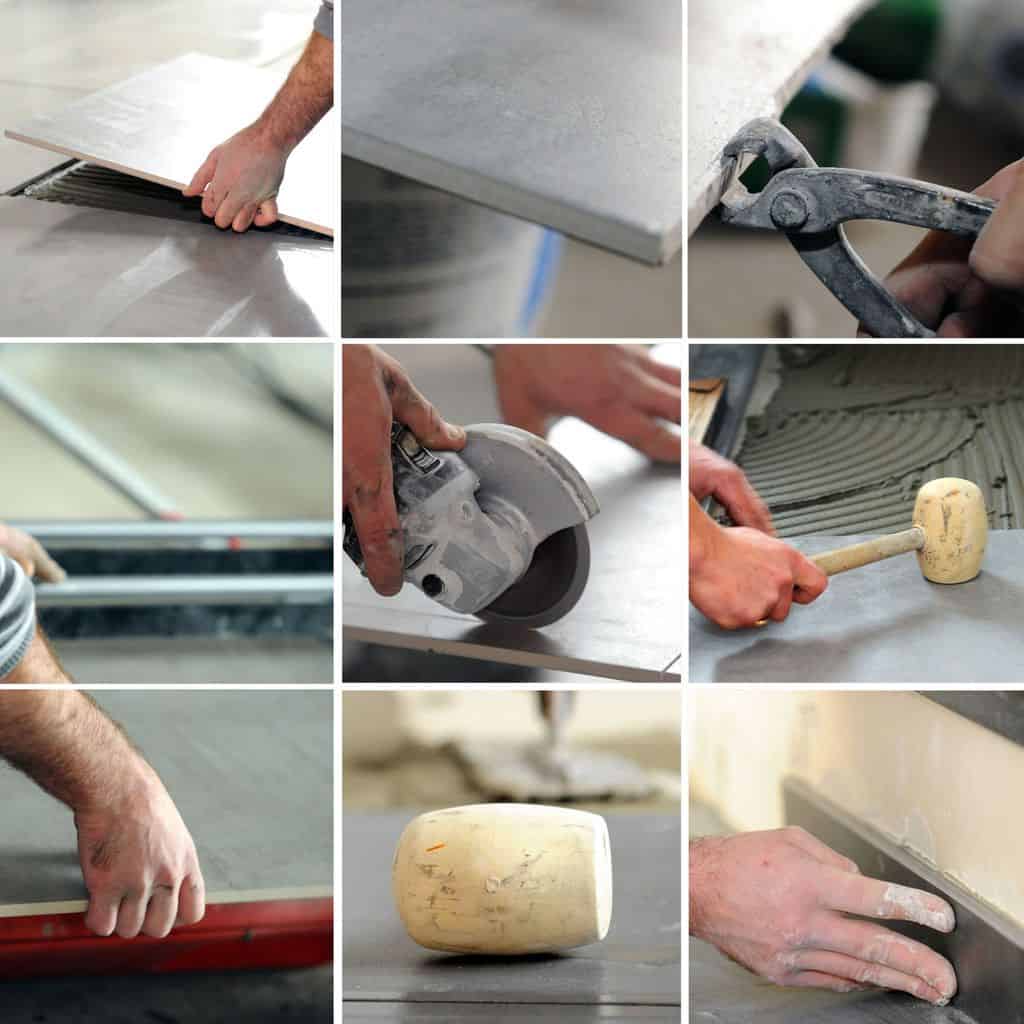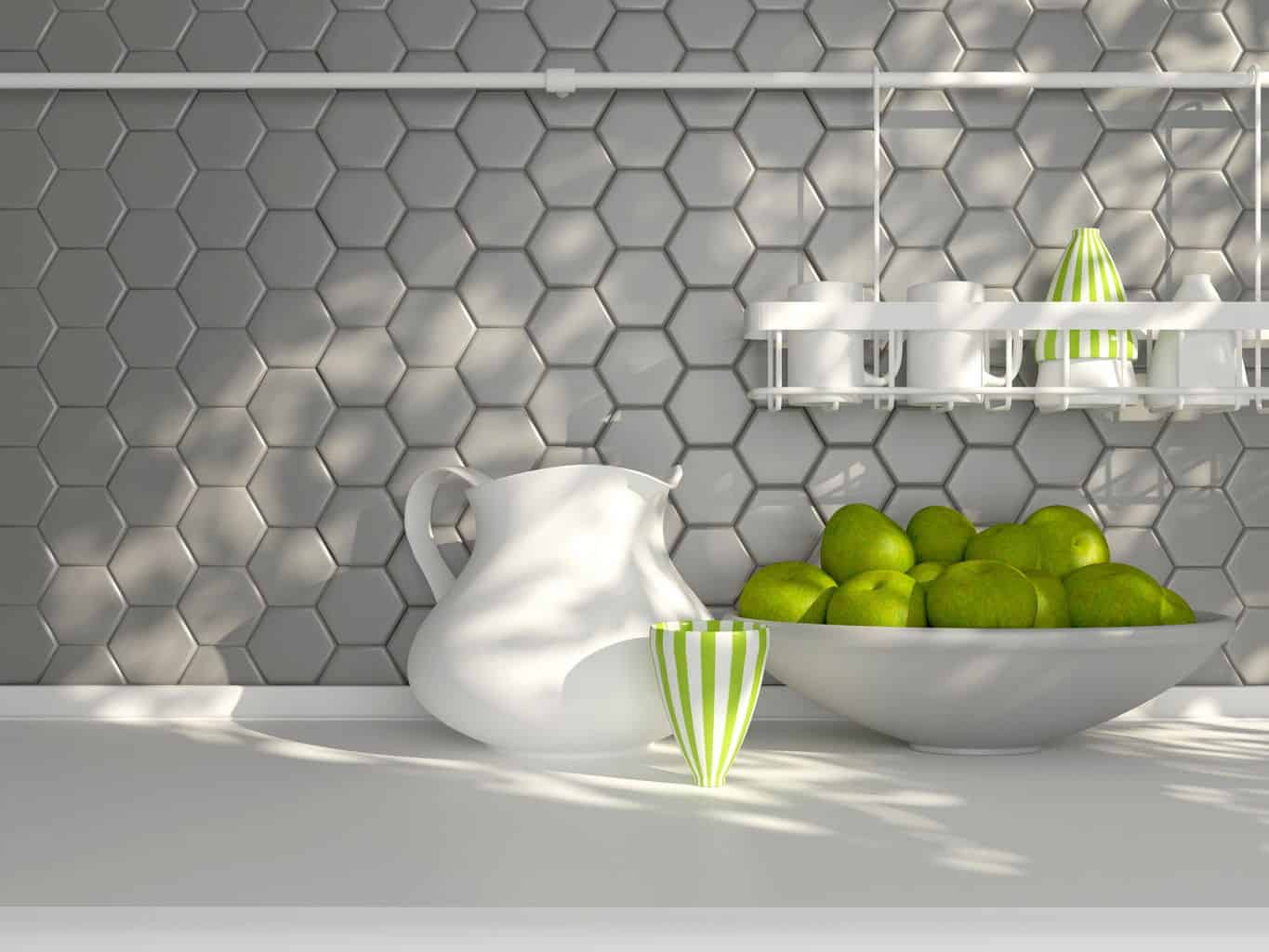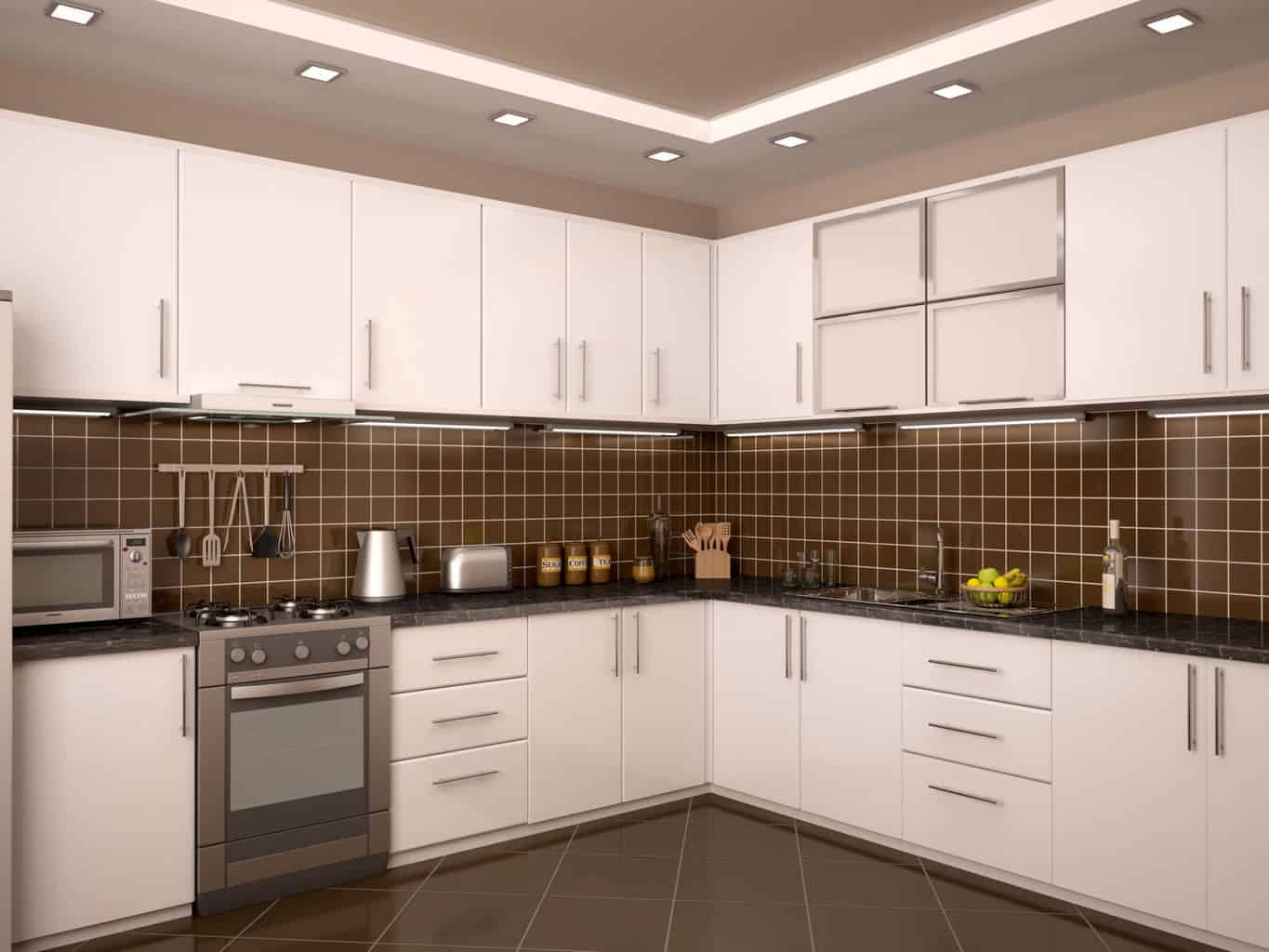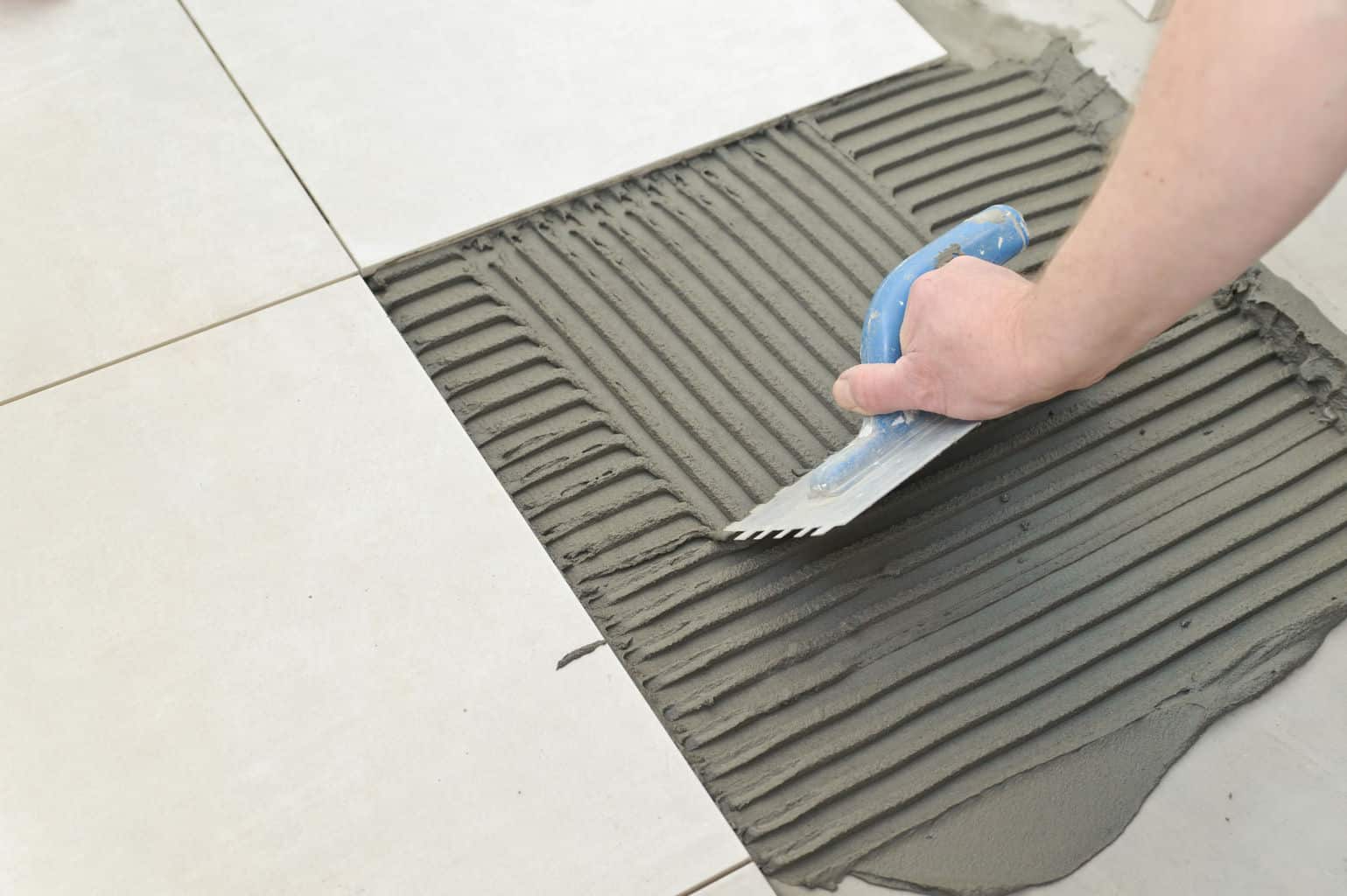If you have chosen to install ceramic or porcelain tiles in your home, you will need to be certain you are choosing the right tiles for your specific needs. Traditionally, comparison amongst tile types was difficult, as there was no standard by which to grade them. However, choosing suitable ceramic tiles requires a scale for comparison amongst the different types, so that you can really compare apples to apples, making it possible to choose the right tile to fit your project.
To help people accurately compare ceramic and porcelain tile types, the Porcelain Enamel Institute created a scale for just such a purpose. The PEI rating for a particular tile will be provided by almost all tile suppliers and you will need this rating so that you can determine whether that specific tile is suitable for your project. Even tiles available for purchase online, like theses porcelain tiles on Amazon, have the PEI rating listed as a part of their product description. Read on to learn about the PEI scale and what you will need to be looking for when purchasing tile for your project.

Porcelain and ceramic tiles are often discussed interchangeably, but really porcelain is a type of ceramic. Ceramic tiles are made from natural products, but as opposed to stones like marble, they are man-made. Both porcelain and non-porcelain ceramic tiles are made by firing a clay or clay mixture in a kiln. The length of time they are fired will affect the strength of the tiles, in addition to how they are pressed and glazed, and how many times they are glazed. Typically, a porcelain tile, which is made with a specific type of clay, is going to be harder, especially if glazed after firing. Glazing a ceramic tile is not required, but most do choose to use a glaze as it protects the tile and increases the lifetime of the tiles themselves.
To see how the tiles are made, check out the video below by Porcelain Enamel Institute.
What is the PEI Scale?
The PEI scale has ranked different ceramic tile types into five separate classes, based on the “hardness” of the tile. Similarly to the “Measure of Hardness, or, MOH rating with wood floors, the PEI class rankings will list the level of durability of the different tile types. However, unlike with wood floors, there is more to consider when you are choosing a ceramic tile, as these tiles can be used for such a variety of projects. Decorative tiles or tiles used on walls do not need to be as strong as those used on counters, and tiles used as flooring will need to be the strongest.
Here is a breakdown of the separate tile classes on the PEI scale, and what they mean. The classes are ranked from 1 to 5, with a rating of 1 being the most delicate tile type and a rating of 5 being the most durable.
Class 1
Tiles rated as a Class 1 on the PEI scale are not suitable for floors anywhere or under any circumstances. These tiles can be used on walls or décor only, and I would not recommend that they are used on countertops, either.

Class 2
Tiles that have Class 2 rating are suitable for use on floors, but should not be used in areas with heavy foot traffic. In most cases, they are best used on walls, but areas with very low foot traffic, like bathrooms, are the only areas where a class 2 tile should be used on the floor. If you have children, Class 2 tiles are probably not going to be the right choice for you in your home. Also, I would recommend if you are certain that you want these tiles on your flooring, put it in a bathroom that is not used regularly by guests to not only minimize the amount of foot traffic on the tile, but to also limit the frequency that the floors will be walked on with shoes.
Class 3
Class 3 tiles are suitable for walls, countertops, and normal levels of foot traffic. As with all tiles, it is really best to avoid shoes on your tile floors, as this will reduce the likelihood of cracking your tile. The best application for your Class 3 tiles, if being used on a floor, is going to be somewhere like the bathroom rather than in a kitchen. I would also say that Class 3 tiles are only suitable for countertops or floors in bathrooms and that I would not recommend going any lower on the PEI scale than a 3 for any flooring or countertop projects.
Class 4
A tile rated Class 4 on the PEI scale is hard enough for any residential application: floors, countertops, walls, etc. This is where most of your home use tiles are going to fall on the scale, and these are going to be suitable for use anywhere in your home that you would choose to install tile.

Class 5
Class 5 tiles are the highest rated. If your tiles are being used in a commercial or even industrial application with heavy foot traffic, you must choose tiles rated Class 5. That being said, in most cases, you do not need a Class 5 PEI rated tile in the home, a Class 4 will be sufficient to handle home foot traffic.
More to Consider, PEI Rating and Quality
The PEI Scale takes more into consideration than just the durability of the tile. With a higher PEI rating, the resistance of the enamel on the ceramic tile is higher, but there are more things you should consider when choosing a tile than just how durable it is.
A higher quality tile will have a PEI Rating sufficient for your project and also the following:
- The Shape: Consistent shape and dimension among the individual tiles needed your project. While the coloration on the tiles may vary, the dimensions should be consistent.
- The Coloration: The appearance of the glaze is smooth and attractive, in addition to being consistent. There will be some variation in the color in any ceramic tiles, so you should choose enough tiles from the same batch to not only complete your project, but also make sure to have some extra for any replacements needed during the installation or in the future. Additionally, I always recommend laying out the tiles in the pattern you plan to use prior to actually starting installation so you are sure the gradation is consistent and attractive.
- Water Resistance: The ability to act as good resistant material against liquids. A porcelain tile or non-porcelain ceramic tile is going to be very water resistant in comparison to other materials. The hardness of the glazing on the ceramic tile means the porousness of the tile is lower, so the tiles stand up better to water damage.

- Wear Resistant: Ability to stand up to wear. Some tile gets its coloration from the glaze, and as the glaze wears naturally, these will show wear faster than a porcelain tile where the colorway extends throughout the entire tile. These are referred to as “full body tiles” and tend to be more expensive than those that are just glazed.
- Stands Up to Cracking: The ceramic tiles ability to prevent cracking comes down to more than just the hardness or the PEI rating. The porousness and water resistance of the tile will also affect whether the tile is more prone to cracking, as any moisture that seeps into tile can freeze, expand and crack the tiles. Additionally, dropping anything heavy on the tiles can also cause cracking, or striking the tile with something sharp (like the heel of a shoe).
- Maintenance and Cleaning: Learning how to clean the ceramic tiles and discovering what you can use to clean and maintain the tiles is something you should always find out from the manufacturer before choosing a tile for your project. Often, you will need to find a reliable special cleaner like this one available on Amazon for keeping your ceramic floor clean and getting the most out of your tile.

Ceramic tiles, whether porcelain or non-porcelain, are an excellent choice for many different applications. The tiles can vary significantly in size, shape, and color, and so can fit into a wide range of styles and design schemes. They make a beautiful addition to any room in your home, and can also be used in commercial or industrial applications and when chosen correctly, will stand up to the test of time. There is a reason ceramic tiles have been used across centuries and are still being used today. You must, however, make sure that you are making the right choice of tile or you may find yourself disappointed in your ceramic flooring. Looking at the PEI Rating of your tile is an important step in making certain that you are choosing the right tile for your project.
